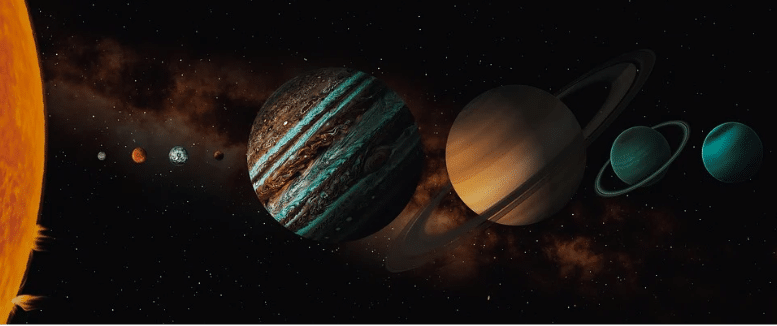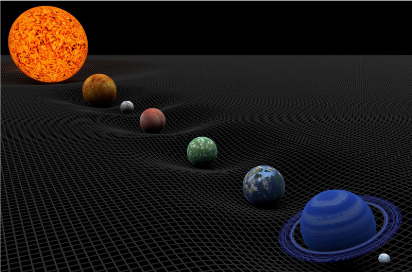The Wonders of Mother Nature.
Did you hear about the most intense Geomagnetic Storm in recorded history? Let’s take a closer look at what happened back in 1859.
The Story Of the Carrington Event
It was not a normal day for everyone who woke up on 2nd September 1859. People came out of their houses and witnessed something horrifying and amazing that they had never seen before. They saw the sky covered with thousands of auroras of different beautiful colors(red, blue, green, purple). It was so mesmerizing and frightful. Cuba, Jamaica, Bahamas, and Hawaii were some of the places which also witnessed these auroras for the first time. People were scared as something like this had never happened before, and people were confused.
An expert, English Astronomer Richard Carrington, knew that the Sun was responsible for all these disasters. He was on his telescope that day observing the sun when he came to know that the sun was producing a geomagnetic storm. Our Earth’s magnetic field wasn’t strong enough to hold those storms and the storms hit the earth causing severe damage. That way, it was given the name Carrington Event. The solar storm that occurred in 1859 was 3 times stronger than the storm that occurred on March 13, 1989.
Everything you need to know
- A geomagnetic storm is also known as a Magnetic storm and Solar Storm.
- The Geomagnetic storm that occurred in 1859, also known as the Carrington Event was the most intense in recorded history.
- It caused a powerful auroral phenomenon that was witnessed globally.
- It also caused tremendous sparking and fire in multiple telegraph systems.
- The Coronal Mass Ejection from the Sun was responsible for this horrible yet unimaginable solar storm.
- This event caused faults in many telegraph systems all over Europe and North America, the telegraph operators suffered from electric shocks.
- Fields and forests caught fire as an enhanced electric current was flowing through electric wires.
- It was one of the most powerful and horrifying solar storms in history, giving it the name Solar Superstorm.
- Telegraph paper ignited spontaneously.
- Devices were disconnected from the transmission line but were still working, sending broken messages.
You might be wondering what exactly a Solar Storm is?
Geomagnetic storm
The Earth’s magnetic field started being interfered with by the activities happening on the Sun, this event is said to be a solar storm. Solar Flares and Coronal Mass Ejections are some events responsible for creating solar storms. These events create a gust of charged particles called “Solar Wind” which can reach the earth within a few hours if directed towards the earth. This collision creates immense light as a geomagnetic storm erupts and can last for several days under favorable conditions.
It was a blessing to have such a strong storm back in the time when technology had just come into existence. The situation could get a lot more drastic if such an event has taken place nowadays when technology is at its peak. It happened in the past doesn’t mean it would not happen again. Nature has shown its enormous and unimaginable capabilities and never fails to amaze us. These unpredictable and uncompelling events can occur anytime and anywhere.
The Impact on Earth:
The geomagnetic storm that followed the Carrington Event had profound effects on our planet. Some of the notable consequences included:
- Auroras: The most visually stunning result of the Carrington Event was the widespread appearance of auroras. These beautiful natural light displays, typically confined to polar regions, extended as far south as the Caribbean and Hawaii. People in areas that rarely witnessed auroras were awestruck by the vibrant, multicolored skies.
- Telegraph Disruptions: The 1859 geomagnetic storm wreaked havoc on telegraph systems worldwide. Telegraph operators reported experiencing electric shocks, telegraph lines malfunctioned, and in some cases, they could operate without power due to the induced electric currents in the wires.
- Contemporary Impacts: In the 19th century, the telegraph system was a key means of communication. The disruptions caused by the storm significantly impacted global communication, highlighting the vulnerability of electrical systems to space weather events.
Modern Relevance:
While the Carrington Event remains a unique and historic occurrence, it serves as a stark reminder of the potential impacts of space weather on our increasingly interconnected and technological society. In the modern era, a geomagnetic storm of similar magnitude could disrupt power grids, satellite communications, and GPS systems, leading to far-reaching consequences.
Conclusion:
The Great Geomagnetic Storm of 1859, or the Carrington Event, remains a captivating chapter in the history of space weather. This remarkable event not only illuminated the night skies with breathtaking auroras but also demonstrated the profound impact of solar activity on Earth’s technology and infrastructure. Understanding the past helps us prepare for future space weather events and underscores the importance of space weather research and preparedness.
-by Vaidehee Bhawsar (Content writer Intern)
06-11-2023





